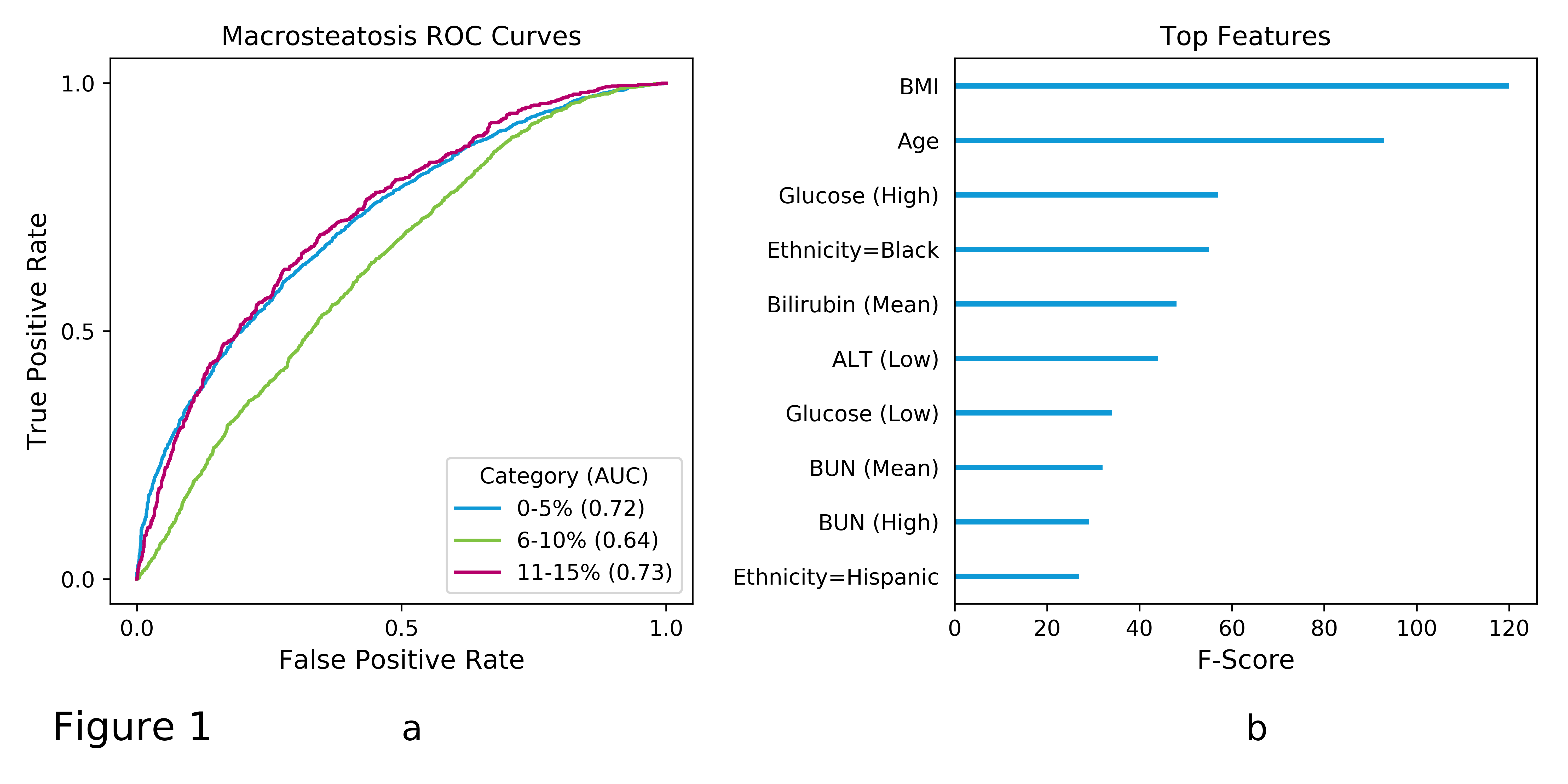Machine Learning to Predict Deceased Donor Liver Biopsy Results
United Network for Organ Sharing, Richmond, VA
Meeting: 2020 American Transplant Congress
Abstract number: A-124
Keywords: Area-under-curve (AUC), Biopsy, Liver, Prediction models
Session Information
Session Name: Poster Session A: Liver: MELD, Allocation and Donor Issues (DCD/ECD)
Session Type: Poster Session
Date: Saturday, May 30, 2020
Session Time: 3:15pm-4:00pm
 Presentation Time: 3:30pm-4:00pm
Presentation Time: 3:30pm-4:00pm
Location: Virtual
*Purpose: Biopsies are often cited as a key factor on whether to accept a deceased liver offer. Motivated by the influential role of biopsy findings on liver offer decisions, we develop and evaluate a machine learning model to predict biopsy results given only clinical and lab data available from the OPTN at the time of match.
*Methods: We collected OPTN data at the time of match for deceased donors since 1999 with recorded liver macrosteatosis assessments (N = 23017 donors). Collected data include mixed continuous/discrete demographic variables (e.g. age and ethnicity), discrete medical history indicators (e.g. history of hypertension), and continuous lab measurements (e.g. serum creatinine levels). These data points were used as features for an XGBoost machine learning model trained to predict macrosteatosis category (“0-5%”, “6-30%”, or “>30%” macrosteatosis). The predictive model was trained using 90% of collected liver donors; the remaining 10% were reserved for model assessment via ROC analysis. We calculated ROC curves (Figure 1a) in a one-versus-rest manner (e.g. 0-5% macrosteatosis versus all other categories).
*Results: Markedly different performance was observed across macrosteatosis categories. The model performs relatively well at rank-ordering on the extreme ends (0-5% or >30%; AUC 0.72 and 0.73) but poorly for the intermediate 6-30% category (AUC 0.64). Among the top features, as determined from XGBoost feature importances, were age and BMI followed by a number of features derived from lab measurements (Figure 1b).
*Conclusions: Distinct differences in performance across macrosteatosis categories indicate challenges for biopsy prediction models. As the model was trained on assessments from individual biopsy readers, these challenges may reflect subjective biopsy interpretations where multiple pathologists can reach different conclusions from a single biopsy. Intuitively, one could expect better agreement at the extremes where severity of the condition is obviously very low or very high with more uncertainty toward the middle as observed in our model. Further investigation is needed to assess confidence of biopsy results stratified by severity and the impact on predictive models derived from those results.
To cite this abstract in AMA style:
Martinez C, Placona A. Machine Learning to Predict Deceased Donor Liver Biopsy Results [abstract]. Am J Transplant. 2020; 20 (suppl 3). https://atcmeetingabstracts.com/abstract/machine-learning-to-predict-deceased-donor-liver-biopsy-results/. Accessed November 3, 2025.« Back to 2020 American Transplant Congress

